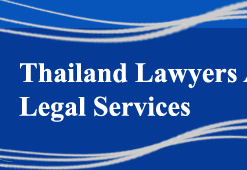



    |
|
| |
|
Framework Agreement on the ASEAN Investment Area (AIA)
Dr. Lawan Thanadsillapakul
Legal Aspects of the AIA Agreement and its ImplicationsProvisions under the AIA, especially the extension of national treatment(26) and opening up of industries, greatly modify the previous constraints on foreign investors relating to these significant issues: restricted areas of investment, restricted entry and establishment, restricted foreign shareholding/equity, and other screening processes as well as controls on the operation of foreign investors(27). These are the techniques employed by ASEAN countries in restricting the entry and establishment of foreign investors, or the screening of foreign investors into their territories. The Framework Agreement on AIA mainly focuses on liberalising such constraints to assure the 'open door' policy of ASEAN to a greater extent than ever before. Therefore, the decision to establish the ASEAN investment area as a single investment area that needs to eliminate all such barriers and constraints to investors, regardless of nationality and sources of investment, is a radical move toward investment liberalisation and closer economic integration in the region. Consequently, national treatment(28) will be granted concurrent with the opening up of industries(29) to dismantle the main barriers to foreign investment in ASEAN countries. Even though the timetable for implementation of NT provides a 10-year differential between ASEAN investors and non-ASEAN investors, it is set as a transitional period for ASEAN countries to prepare their readiness for fully opening up the door, shifting to another level of liberalisation.
From a legal point of view, this move shows that ASEAN countries concertedly restrain their discretion and refrain from fully exercising their sovereign rights to control and screen foreign investment that previously were jealously guarded by all ASEAN countries. States, especially developing countries, have traditionally preserved their absolute rights, recognised in international law, to control the entry and establishment of foreign investors within their territory (Muchlinski, 1995: chapter 6; UNCTAD, 1999: 3). This policy change in ASEAN reflects the balance of interest generated by economic integration and the surrender of economic sovereign rights of the ASEAN member countries. This is the price to be paid for encouraging intra-regional economic development by liberalising investment. This further implies that the policy options and choice of the regulatory regime of ASEAN are centrally based on balancing the interdependence of the regional and global economic environment. However, the extent to which the AIA would fruitfully enhance intra-ASEAN preferential treatment by implementing the mutual National and Most-Favoured-Nation treatment among them, the extent to which AIA is generalised liberalisation, and what the balance is between them, will be analysed below.
Theoretical Models and Policy Options for Investment Liberalisation
The Framework Agreement on the AIA indicates that ASEAN countries are moving toward closer economic integration. This may be usefully analysed using the framework suggested by the UNCTAD, which proposes that investment regulations used among host states concerning entry and establishment of foreign investment may be categorised into five models(30):
investment control model; selective liberalisation model; regional industrialisation program model; mutual national treatment model; combined national treatment/most-favoured-nation treatment model. I will briefly discuss theses five models that countries generally choose to apply to their investment regime or investment agreement/arrangement together with their economic policy options. The actual provisions in particular agreements may involve a combination of characteristics and may be formed as a hybrid.
1) Investment control model is a model which the country preserves full state control over entry and establishment. This model is followed in most BITs, except the US and Canada BITs(31). BITs recognise the restrictions and controls on the entry and establishment of FDI that leave the matter to national discretion. This approach is also favoured by certain regional instruments(32). This model suggests a policy option that accepts complete state discretion through investment controls that preserve the general power to screen proposed investment.
2) Selective liberalisation model offers limited rights of entry and establishment, i.e. only in industries that are included in the positive list by the agreement of the contracting parties(33). Rights to entry and establishment may be enjoyed but may be subject to restrictions that the host country is permitted by the agreement. Moreover, the contracting parties may make commitments to undertake further negotiations over liberalisation in specific industries at an agreed future date. This model suggests the policy option to liberalise cautiously through the adoption of a selective basis by opening up one or more industries at a time.
3) Regional industrialisation program model offers full rights of entry and establishment based on national treatment for investors from the members of a regional economic integration organisation only. This model encourages cross-border investment by way of regionally integrated enterprises and projects(34). This model suggests the policy option to follow the regional industrial programme and the establishment of regional multinational enterprises therefore setting up a supranational form of business organisation aimed at encouraging intraregional economic development.
4) Mutual national treatment model offers full rights of entry and establishment based on national treatment for all natural and juridical persons engaged in cross-border business activities from member countries of a regional economic integration organisation. This model establishes a common regime for entry and admission for investors from member countries(35). MFN treatment for investors from non-members is generally not available. This model is different from the previous one, in that a right of entry and establishment is not limited to only a particular industrial programme. This model suggest the policy option to grant full liberalisation of entry and establishment on the basis of mutual national treatment allowing such a right to exist between states aimed at encouraging common interest in regional integration.
5) Combined national treatment/most-favoured-nation treatment model offers full rights of entry and establishment (pre- and post -entry) based on the better of NT or MFN, subject only to reserved "negative lists" of industries to which such rights do not apply. The US and Canada BITs also follow this model. The aim of this model is to widen the entry and establishment rights as far as possible to enable investors from member countries to obtain the same rights of access as the investors from national or third countries. In this model, MFN treatment is not available to investors from non-members. This model suggests the policy option to follow the full NT/MFN model and open up entry and establishment for investors from the contracting countries on the basis of the better of these two standards, subject only to "negative lists" of reserved industries(36). The existence of negative lists of excepted industries emphasises that certain strategic industries may be beyond the reach of liberalisation measures.
Considered from this perspective, the AIA applies a hybrid model combining model 4's "mutual national treatment" and model 5's "combined NT/MFN treatment with negative lists". This is because AIA extend NT to all investors, not only investor from member countries, (immediately to ASEAN investor and to non-ASEAN by 2020) subject only to negative lists (Art. 4 (b), 7). Moreover, all industries are opened for investment to ASEAN investors by 2002 (initially by 2010), and to all investors by 2020 (Art.4 (c), 7). MFN is not, in principle, extended to non-ASEAN firms (Art. 8 and 9) unless they meet the criterion of "ASEAN Investor" (discussed below). Furthermore mutual NT is extended to ASEAN investors [Art.7(2)]. I will analyse this legal aspect of AIA and its applicable models in the following sections.
_______________________________________________________________
(26) See UNCTAD (1999c) National Treatment: UNCTAD Series on issues in International Investment Agreements. New York and Geneva: United Nations Publication.
(27) For detailed analysis on control of inward investment by host states, see Muchlinski, 1995: chapter 6, pp. 172-203.
(28) Art.4 (b) of the Framework Agreement on ASEAN investment Area.
(29) Art. 7: Opening up of Industries and National Treatment, Framework Agreement on the ASEAN Investment Area.
(30) For a detailed analysis on country approaches to entry and establishment, policy options and the five models see UNCTAD, 1999.
(31) The US and Canada model BIT stipulate NT and MFN, whichever is the more favourable to foreign investors from the contracting parties.
(32) For example the ASEAN Agreement for the Promotion and Protection of Investment, the Framework of the Southern Common Market (MERCOSUR), and the Agreement on Andean Subregional Integration (ANCOM) [see UNCTAD (1999a: 18-9)].
(33) For example the General Agreement on Trade in Services (GATS) which is the "bottom up" approach liberalisation. The Contracting parties liberalise their service sectors only in the committed Country Schedule or Specific Sector Schedule, and they also can have limitation either on market access or NT treatment or both. See UNCTAD (1999a: 20).
(34) ASEAN also uses this approach for intraregional investors in the Revised Basic Agreement on ASEAN Industrial Joint Ventures of 1987, the ASEAN Industrial Co-operation Scheme (AICO). Other agreements have followed this model are the Treaty Establishing the Common Market for Eastern and Southern Africa (COMESA) 9see UNCTAD (1996c) Vol III, p. 103., and the Revised Treaty of the Economic Community of West African States (ECOWAS) [see UNCTAD (1999a: 21].
(35) The most significant example of this model are the Treaty Establishing the European Community (EC), also the Code of Liberalisation of Capital Movements and the Code of the Liberalisation of Current Invisible Operations of the OECD. Several regional organisations also adopted this model such as the Treaty Establishing the Caribbean Community (CARICOM), the Treaty for the Establishment of the Economic Community of Central African States (ECCAS). Also the AIA of ASEAN which combines this model with the combined NT/MFE model. See UNCTAD (1999a: 22-25, 1996c:44-5).
(36) The most significant example of this model is the NAFTA agreement, the 1994 Treaty of Free Trade between Colombia, Mexico and Venezuela, the MERCOSUR agreement, and the Asia-Pacific Economic Co-operation (APEC) Non-Binding Investment Principle. See UNCTAD (1996c Vol. III:73-77, Vol. II pp. 513,520, 536).